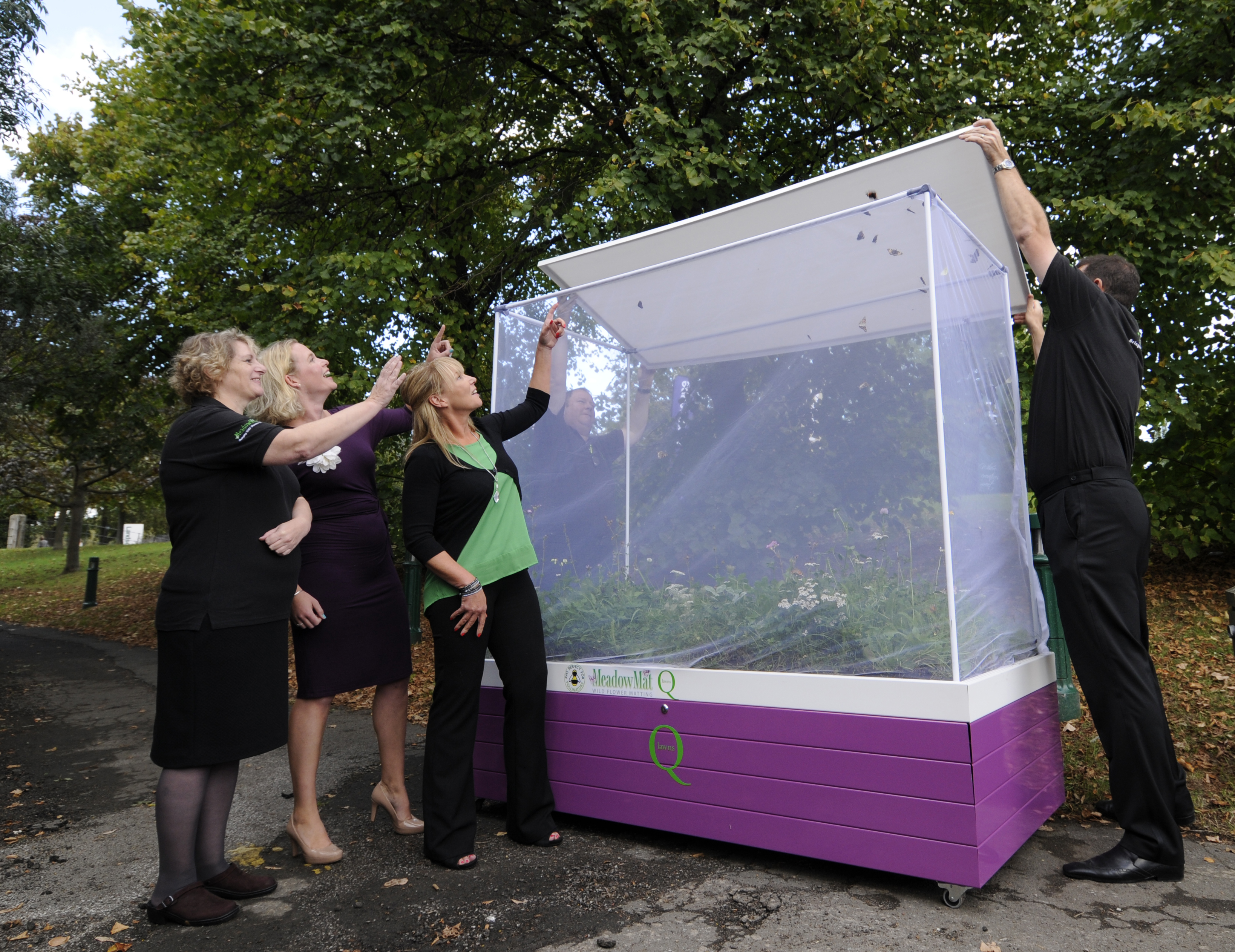A 100% natural solution to halting the catastrophic decline in Britain’s wildflower meadows that has seen more than 90% lost in the past 65 years is launched at London’s Landscape Show (September 23 & 24).
Q Lawns from Norfolk is one of the country’s top lawn-turf growers. They have adapted their grassland knowledge to create two wildflower meadow turfs that are studded with up to 42 native British wild flowers.
Traditional Meadow Mat has 34 different wildflower species and Birds, Bees and Butterflies Meadow Mat has 42, including grasses and seed bearing flowers for the autumn feeding of birds. Both can be used anywhere, from private gardens to estates and parkland and they comply with nationally recognised environmental impact assessments.
To reinforce the message at The Landscape Show, Q Lawns has worked with butterfly breeder Angelina Hayden. She has created a special dome so that visitors can see 40 native British butterflies. These have been specially selected by her to survive in the wild as they will all be released on the last day of the exhibition.
“The loss of more than 90% of our natural wildflower meadows is an environmental catastrophe,” says Q Lawns’ Angela Lambert. “Meadow Mat means that anyone, including schools, can create an area that will benefit wild birds and insects including bees, butterflies and ladybirds. It is a vibrant and natural contribution in the fight to save our natural environment.”
The traditional Meadow Mat flowers from May to July and the Birds, Bees and Butterflies variety continues on to the end of September. The meadow flowers will bloom in the first summer of planting and the ideal time to lay the turf is either autumn or spring.
“Wildflowers don’t need rich soil. Any south or west facing area of grassland or garden that has not been enriched with fertilisers for at least five years will be ideal,” explains Angela. “The object is not to encourage the meadow grasses to grow too strongly and swamp the flowers. In most locations it will need mowing just once a year, once the flowers have seeded. Do not leave the grass clippings on the turf as this will produce a nutrient feed that will encourage the grasses to grow.”
Q Lawns worked with the garden designer and horticulturalist Lisa Stubbs to select the native British wild flowers used in both versions. All the turf and flowers are grown at the company’s farm in Norfolk.


